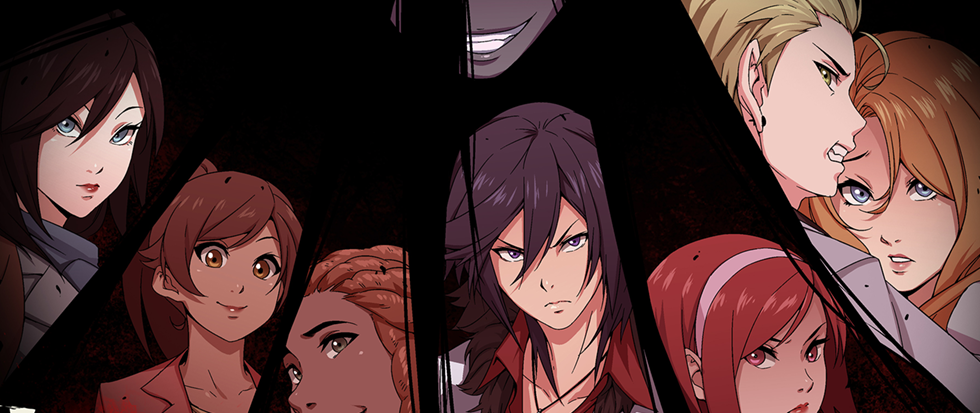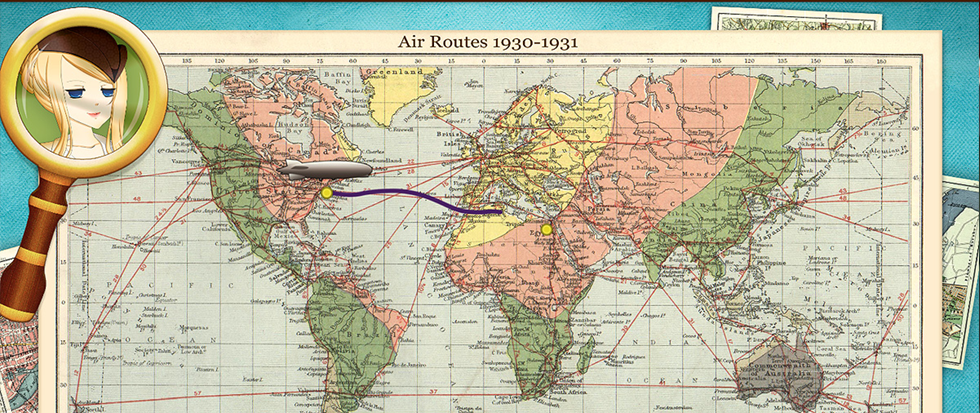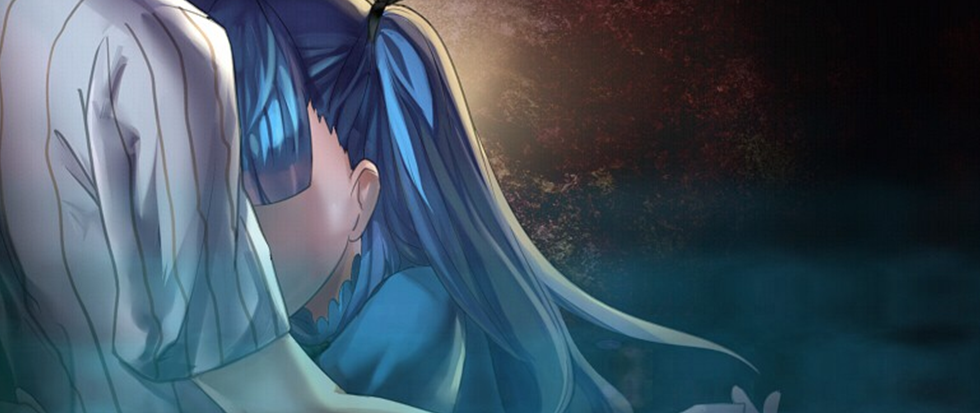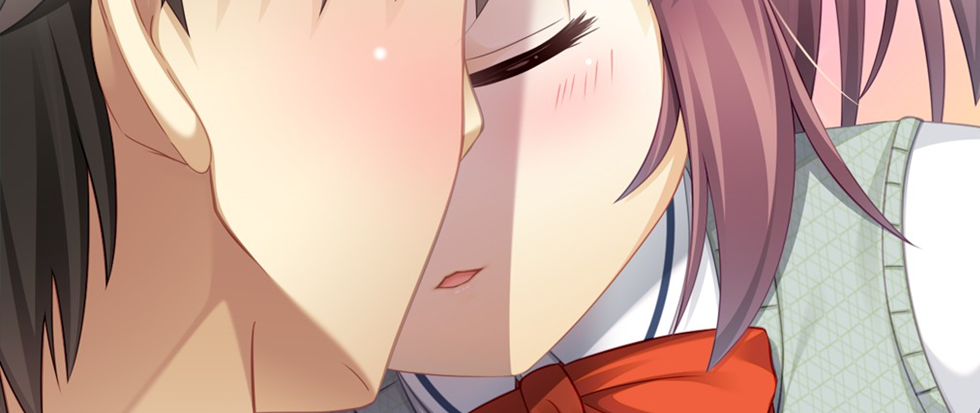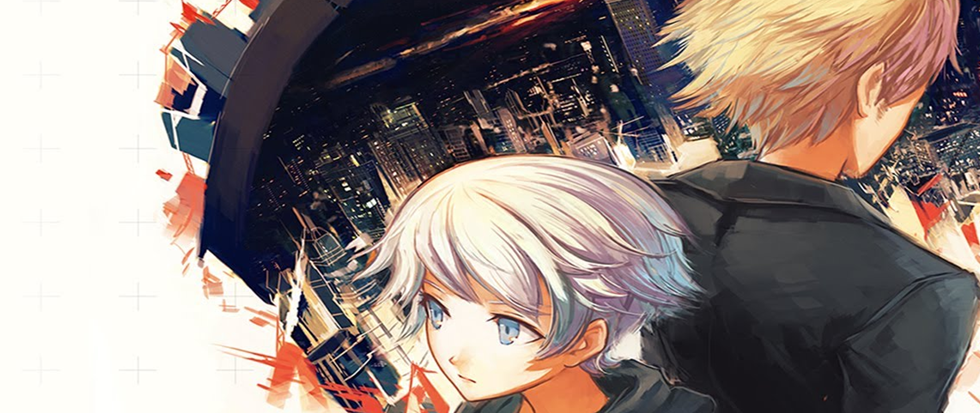
Dysfunctional Systems is about bringing order to the world
Dysfunctional Systems is a visual novel series about trying to bring order to the world.
Oddly enough, the Dysfunctional Systems series itself has a bit of a chaotic history. Originally the developer Dischan released the first chapter of the game titled Learning to Manage Chaos in 2013/2014, which unfortunately did not enjoy great financial success. They had a successful Kickstarter to fund both episodes 2 and 3, but due to poor financial management had to cancel the project and shut down in 2015. That seemed to be the end of the project and the studio, leaving me with a sad feeling whenever I saw Dysfunctional Systems in my Steam library as I wondered what could have been. But completely out of the blue, this July I received an unexpected message from Kickstarter informing me that the prequel episode Orientation was about to be released, and work was back on for episode 2. I decided to read both of them back to back, making this a review of Orientation and a revisit of Learning to Manage Chaos.
I’ll start with the artwork, because I know that’s been a big issue for people who were considering reading the Dysfunctional series and saw what they perceived to be a massive downgrade in quality between episode 1 and the prequel episode 0. The original artwork for Dysfunctional Systems was by Saimon Ma, aka Doomfest, who also did the artwork for Juniper’s Knot. Doomfest has an easily recognizable style with softer, muted color palettes and tones along with distinct edges and shading throughout. I personally find this style very relaxing to look at, especially while playing through Learning to Manage Chaos. A different artist named Ryan Miller, or Rtil, was hired on for Orientation, resulting in a change of character style and brighter color palettes which subsequently altered the overall feel of the work. The backgrounds and sprites of Orientation aren’t bad, and I found some of the CGs at the end of the story to be particularly striking. That said, it’s definitely not the same style as Learning to Manage Chaos. Doomfest’s art did such an amazing job at setting a melancholy, uncertain mood for Dysfunctional Systems from the minute you booted up the menu; having such a striking change probably wasn’t what people wanted after two years of zero news on Dysfunctional Systems, which is likely the root of a lot of complaints. But Orientation is much lighter in tone and subject matter than Learning to Manage Chaos, so in a way the brighter art style works for it. I prefer Doomfest’s art overall, but having Rtil do the art for episode 0 definitely shouldn’t be a dealbreaker.

The music itself was great in both Learning to Manage Chaos as well as Orientation. It’s mostly electronic with a few softer elements mixed in, and really helps the pacing and tone of the story. The tracks are all well edited and cleverly placed within the context and certain scenes; the silence between tracks feels deliberate and severe, as opposed to the silence one gets when the music just ends and the next track isn’t queued properly to start. While I might have liked the music for Learning to Manage Chaos more, I still quite liked all the tracks in Orientation. I only wish the prequel could have had a few more musical options, because the VN itself was only about an hour long and I definitely noticed when a couple of the tracks repeated themselves. But this was a free VN, so I can’t really complain about the music or sound effects of Orientation.
From a technical standpoint, both games were pretty solid. Learning to Manage Chaos had some aspect ratio problems that cut off the top and bottom of the window at full screen, resulting in me playing both episodes in windowed mode from that point on. I had zero issues with sound or text besides that, and neither VN ever crashed on me. Additionally, once you completed each episode you could go to an extras menu and listen to the story’s music in the jukebox section or look through the CGs. I especially liked that the concept art section of Orientation because it included some of the art that had been intended for episodes 2 and 3, so even though those have been scrapped you can still get an idea of what those parts of the story might have been like.
Now comes the most important part of the visual novel: the characters and narrative. I really loved the story in Learning to Manage Chaos, so much so that I was one of the earliest backers for the Kickstarter campaign to finish the VN. In Dysfunctional Systems you follow a 14-year-old girl named Winter Harrison who is destined to become a mediator, aka a person entrusted with trying to manage the chaos between different worlds, or “planes.” Chaos is never really described in detail in this episode other than being a force that disrupts peace in different worlds, possibly as war or something smaller scale like widespread waterway pollution. Learning to Manage Chaos follows Winter on a mediation shadowing to find out what’s wrong with the world of Sule and then fix it. I adored it. Orientation is set before the events of Learning to Manage Chaos, when Winter first enters school to receive training on becoming a mediator who must travel between worlds. But the story in Orientation (and it really kills me to say this) is boring. And I can tell you exactly why Learning to Manage Chaos succeeded while Orientation fell flat.

The writers at Dischan are absolutely phenomenal at writing interpersonal relationships and the struggles inherent to such relationships. Juniper’s Knot is one of my favorite visual novels of all time, and it’s just two people standing in a burned out church and talking to one another for an hour. Dischan made it work by flushing out the characters and giving them distinct, nuanced personalities that often clashed with each other, resulting in screaming fights, witty barbs, and exercises in conflict mediation. Learning to Manage Chaos had a similar dynamic between the main character Winter and her mentor, Cyrus.
Winter is a headstrong young woman driven by a combination of the guiding morals of her society and her own ideas of right and wrong. I remember initially disliking her for being so opinionated and judgemental, but on subsequent reads I was able to sympathize with her much more. Winter has been raised in a peaceful utopian society where the government sees that everyone is fed, clothed, and properly cared for, so when she visits a world that has violence or poverty she has no frame of reference to put that in and try to process. As a result, she often lashes out because she can’t understand why things are so different on different planes, why people still struggle with issues her world worked out ages ago, and why there can’t be a peaceful solution wherein everyone wins. Cyrus, on the other hand, is a mediator that has seen the worst of dozens (if not hundreds) of worlds and has become incredibly jaded as a result. To him, the quickest or easiest solution to managing chaos is the best, even if it means violence or dishonesty. The conflicts in Learning to Manage Chaos largely revolve around these two trying to stand their ground and defend their beliefs against the other before reaching a compromise. It’s intriguing to read because the characters themselves are quite interesting in their own right, and you can understand the motivations that drive their actions.
With such devotion to the characters, world-building in these VNs often takes a back seat. The world of Sule that Winter visits in Learning to Manage Chaos is only given a handful of characteristics, such being as poor and industrialized, along with a codex page you can read to yourself that goes into their history for a bit. It’s not much, but Dischan doesn’t really need to flush out their worlds because you are far more interested in the people living there than in the universe in which they dwell. A few general bits of information about the world that help establish the basis for Winter and Cyrus’ arguments are satisfactory. It’s the relationships in the VNs that drive Dischan games.
This is where Orientation failed. Orientation takes place entirely on Winter’s Earth, which as mentioned earlier is a utopia. There is no conflict, no war, no political turmoil or unrest. Everyone is quite happy to live their lives free from the threat of poverty or violence. Because things are so blissful and perfect, none of the characters have any particular conflicts with one another, which makes their interactions very boring to follow. You meet close to a dozen characters but none of them are explored in any great depth. Occasionally they might annoy or upset Winter, but they never really push her boundaries or force her to reexamine her feelings or personal understanding of the world around her. Learning to Manage Chaos had a whole plot line that focused on Winter considering whether warfare and murder could be justified, whereas the worst issue she had in Orientation was trying to figure out why her roommate didn’t like her. It was rather disconcerting to experience such a shift in tone, especially reading these two episodes back to back.

Perhaps Dischan could have saved that with intriguing world-building, but Winter’s Earth is abysmally dull. It’s a textbook utopia, and reading about how wonderful the place is compared to all the other planes of existence became incredibly boring and repetitive after a while. It seemed to fall into a pattern of, “They have guns but we don’t, they have murder but we don’t, they have pollution but we don’t, etc etc” for ages. Honestly, I don’t think we needed to sit through all of Winter’s classes in the first few days of school to get this picture; a few summarized lines of text (perhaps in the form of codex entries) would have sufficed.
I can’t even compliment the writers on making such a perfect utopia because it was textbook sanitary and happy since everyone likes the way things are. There’s nothing that makes it a particularly intriguing world; no one fights because no one wants to fight, no one steals because no one is greedy, and so on. The world is peaceful because the people are peaceful, simple as that. Complimenting that kind of world would be like complimenting a piece of paper for managing to be so papery. Orientation did offer up a few juicy tidbits of information here and there, including why the mediators are needed to manage chaos, but so much of this just felt like filler or fluff that didn’t add much to the story. There were a few characters to meet as well, but they may or may not even appear in episode 2 because they haven’t shown up in the character artwork that was released as a preview for the next installment to the series. The ending did hint at something darker in the underbelly of the utopia (yeah, who didn’t see that coming) but largely the world and characters lacked any sort of conflict or other kind of driving force that could hook the audience, which did not make for an engrossing read.
Additionally, the play style for each episode of Dysfunctional Systems is different. Learning to Manage Chaos was a VN with choices that the reader could make that would affect what actions Winter and Cyrus would take, as well as their relationship to each other. I would quicksave and quickload again and again to see what the different outcomes would be, and to learn a little bit more about Winter and Cyrus with each different dialogue option. I was literally trying to manage chaos. Sometimes Winter would fold like a house of cards in a tornado, and sometimes she’d stand her ground and all but rip her mentor’s head off to get her way. The right combination of dialogue options would change what the pair end up doing, but…let’s just say that there’s a “Damned if you do, damned if you don’t” achievement for the game.
Orientation, on the other hand, is a kinetic visual novel with no choices to make at any point. The reader simply follows Winter around the dorms, classrooms, and other parts of campus over the course of a few days. She meets a few friends, and you get a general picture of what life is like in her world, but it’s nothing world-shattering. It might work as the intro for a slice of life VN, but given how powerful the ending for Learning to Manage Chaos was, following it up with Orientation was something of a letdown. Going from trying to make a plan of action in a world on the brink of nuclear war to merely reading about a 14-year-old attending P.E. and Social Studies was a bit jarring and kept me from becoming fully invested in episode 0. Orientation really didn’t have any truly interesting moments until about two minutes before the credits rolled. It’s just like every high school orientation you ever had to sit through; mildly informative, but decidedly unexciting.
Overall, my opinion of Dysfunctional Systems is mixed. Some people complained that Learning to Manage Chaos was too short and took too long to become interesting, and while it’s true that the first episode only takes an hour and a half, I really loved the story and had no issues with the pacing. Orientation failed to hook me and really only served to fill in blanks about Winter’s world that I had been curious about because I found Learning to Manage Chaos so interesting. There aren’t a lot of details out about episode 2 yet, other than the fact that the story is going to deviate from what they planned in the original Kickstarter. It’s definitely going to take place on a different world though, which makes me hopeful that the next installment of the series will gravitate more towards a character-focused Learning to Manage Chaos model than the dull world-building focus of Orientation. Either way though, I intend to buy it the first chance I get.

Dysfunctional Systems: Learning to Manage Chaos is available on Steam for $5, and I’d strongly recommend it for the art and music alone. If you’re not sure about the kind of story-telling that’s focused on a very limited cast, I’d recommend downloading Juniper’s Knot for free from Dischan’s website and seeing if it suits your fancy. Dysfunctional Systems: Orientation can be found on Steam for free, and while I personally wasn’t a huge fan, those of you interested in learning a bit more about Winter’s universe may want to take a look at it. With any luck, we’ll hear more information on the rest of the series soon.


